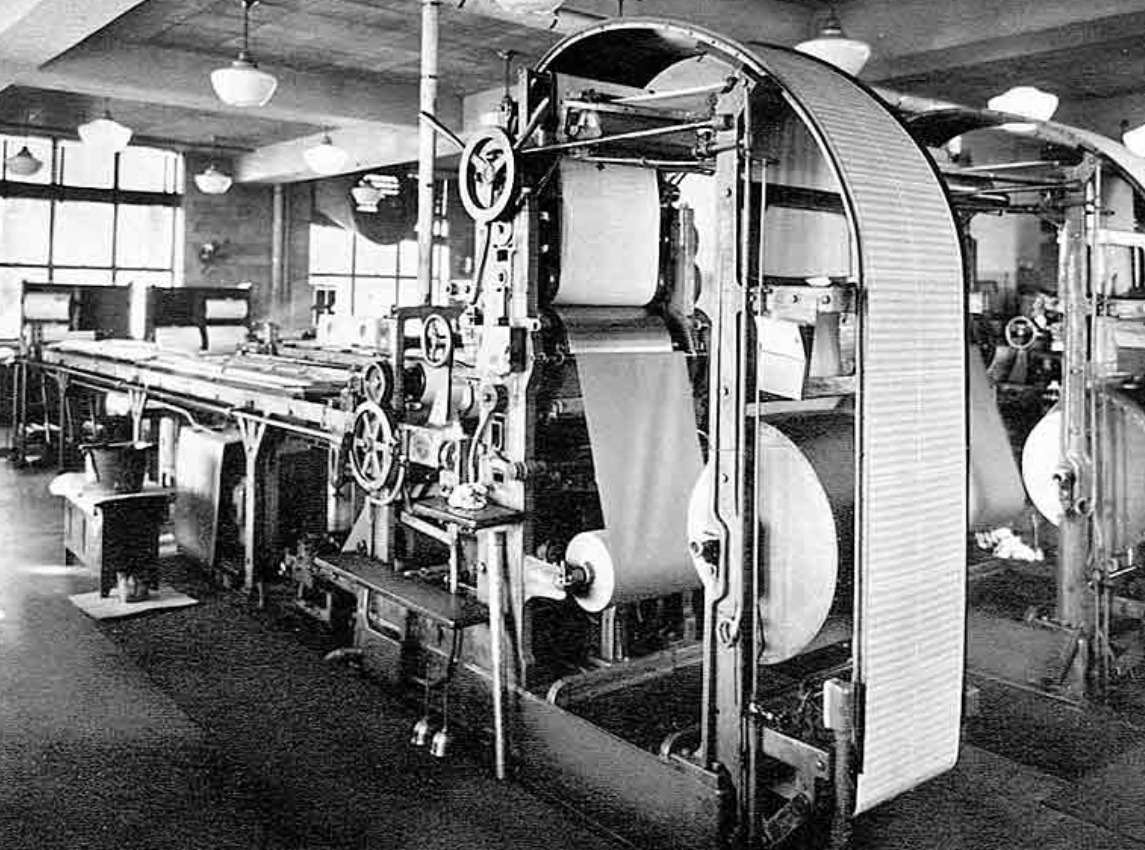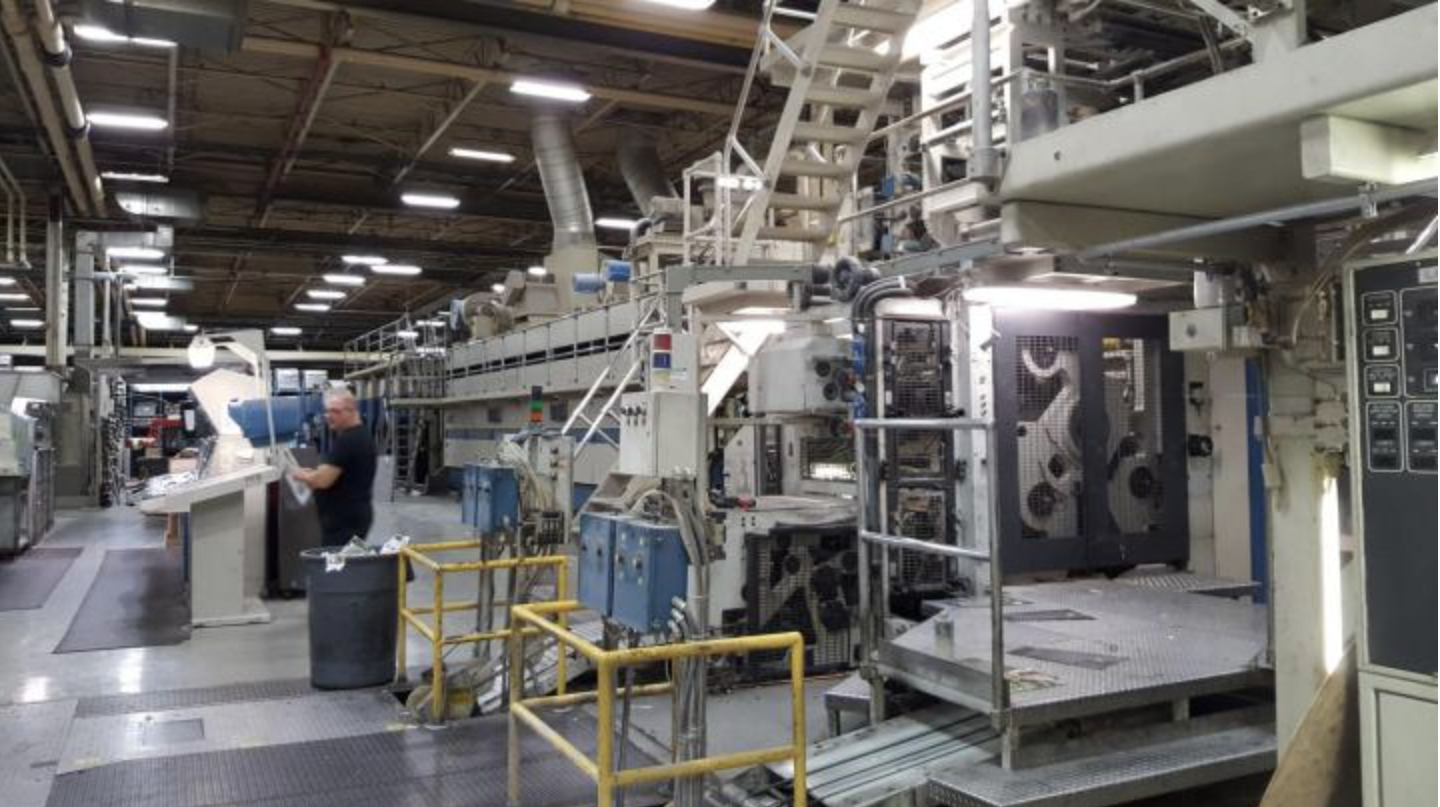Modern Printing Era
Notice any similarities in these pictures of printing machines from the 20th century and 21st century?
Subject: There There by Tommy Orange.
Productions
In the 19th century, the chemical process of photography enabled the transfer of both images and typeset text to a stone or plate. Another process involved using a rubber cylinder between the plate and the printing surface. This method allowed for more efficient offset transfer of images to the printing surface and was later adapted for lithographic printing on paper (Suárez, 144). By the second half of the 20th century, offset lithography became the standard method for printing text and images in books, periodicals, posters, and packaging, paving the way for the printers used in producing books today like There, There.
Next, in the early 20th century, the process of rotary printing revolutionized book production by converting the flat printing surface of typeset text into a curved surface on a cylinder. Flexible papier-mâché molds were used to create semi-cylindrical casts, which were then attached to inked cylinders. This allowed continuous rolls of paper to be printed on both sides, cut, and folded at high speeds. Automation of the casting process and plate machining enabled faster and more efficient production, reaching speeds of up to 100,000 copies per hour. Multiple molds could be made for additional presses, both locally and remotely, making rotary presses ideal for long press runs of newspapers, magazines, and books until the latter half of the 20th century (Suárez, 147).
Publishing Culture
Corporate superstore bookselling chains like Barnes & Noble emerged due to economic and sociological changes in the United States (Striphas, 56). In publishing, the focus on buying and selling translation rights has grown significantly amid increasing national competition. As a result, major publishing firms use innovative sales methods, and acquire other publishers to sell books today such as There There, enabling them to have a global reach. (Steiner, 123).
Circulation
The printed book, created by authors and distributed to readers through a commercial market, did not simply arise from technological advancements. Instead, it represents a cultural ideal that has gradually developed in Western societies since the Renaissance (Hesse, 22). This form of circulation varies the most compared to the other era as there's greater distance and less connection between the writer and the reader/ recipient.
Connection to the Other Printing Eras
These advancements highlight the technological evolution that parallels the historical use of wampum belts for communication. Just as offset lithography transformed printing by enhancing efficiency and quality, the production of wampum belts with intricate designs and encoded messages was a sophisticated means of preserving and disseminating cultural narratives. Modern printing presses, exemplified by the production of Tommy Orange's There There, continue this legacy, enabling widespread distribution of stories and knowledge, much like the wampum belts did in their time.

